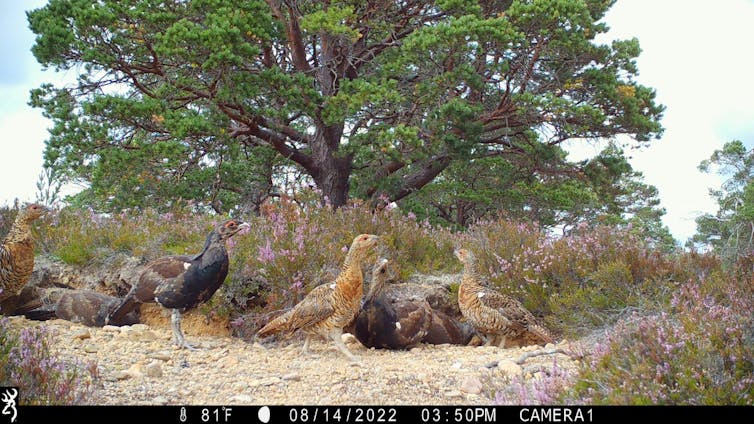Source: The Conversation – France in French (3) – By Fabrice Flipo, Professeur en philosophie sociale et politique, épistémologie et histoire des sciences et techniques, Institut Mines-Télécom Business School
L’écologie politique est régulièrement soupçonnée d’appartenir au camp conservateur – parce qu’elle critiquerait le « progrès », défendrait la nature ou encore les peuples autochtones. Certains considèrent même le risque d’un « écofascisme ». Ces critiques sont-elles fondées ? L’écologie politique est plutôt proche du socialisme, à travers une critique de l’ordre industriel et du marché au profit d’une société coopérative.
Qu’est-ce que l’« écologie politique » ? Ce concept désigne en premier lieu un mouvement social pouvant prendre diverses formes, telles que des associations de plaidoyer (contre les pesticides ou pour le vélo) ou d’action directe (à l’image des Soulèvements de la Terre) ou encore des partis politiques. Il émerge dans les années 1960 et 1970 dans les pays industrialisés, mais a des racines plus anciennes, car toutes les sociétés se sont souciées de leur rapport à leur milieu. Sur le plan idéologique, il se distingue de « l’environnementalisme », qui se soucie de protection de la nature de manière sectorielle, sans projet alternatif de société, un peu comme le syndicalisme se distingue du socialisme. L’écologie politique se définit généralement comme critique de la société industrielle.
Depuis longtemps, l’écologisme ou écologie politique (termes utilisés de manière interchangeables ici) est considérée par certains observateurs (tels Philippe Pelletier, Stéphane François ou encore Jean Jacob comme l’expression d’un certain conservatisme : critique du progrès, défense de la nature, des paysages ou d’un ordre supposément passé, tel que celui des peuples autochtones. Certains entrevoient même la possibilité d’un écofascisme. S’intéressant à ce mouvement voici trois décennies, le sociologue Pierre Alphandéry et ses collègues concluaient à un positionnement « équivoque » relativement à la question de l’émancipation. Est-ce réellement le cas ?
Constatons que l’accusation est faible. Il y a tout d’abord l’imprécision des notions clés utilisées pour disqualifier l’écologie. Prenons le cas de la notion de progrès. L’écologisme la critique. Mais l’historien François Jarrige montre que le progrès scientifique et technique a souvent été porté par des conservateurs, depuis le XIXe siècle. Les fascismes ont été violemment progressistes. Marshall Sahlins, David Graeber et David Wengrow ont également montré que les sociétés supposément primitives ne sont pas moins complexes ni soucieuses d’émancipation, par exemple en termes d’égalité. Alors de quel progrès parle-t-on ? La critique d’un certain type de progrès ne permet pas de ranger l’écologie politique du côté du conservatisme.
La critique d’une écologie conservatrice parce que « protectrice de la nature » présente les mêmes faiblesses. La nature peut être mise en avant par les conservatismes, qui cherchent à faire passer l’ordre social pour donné. Au contraire, avec l’écologie politique, l’ordre naturel n’est pas donné. L’écologie en tant que science de la nature enseigne que cet ordre est sans cesse changeant. Serge Moscovici explique dès 1962 que cet ordre doit être inventé. Il en va de même pour l’ordre de la société écologique. Et la nature est le concept-clé que les Lumières opposent aux conservatismes, et en particulier aux religions, au surnaturel. La nature est ce qui est de l’ordre de la preuve. Elle est au fondement du sécularisme, et donc des démocraties, par opposition aux théocraties.
Autre amalgame et raisonnement fallacieux : l’écologie valorise le local, comme les conservatismes, et donc l’écologisme serait conservateur. C’est passer sous silence les différences. Le localisme écologiste est conditionné par un rapport égalitaire à la biosphère (« penser global, agir local »), qui accorde une place à tout vivant, y compris humain. Le localisme conservateur vise à la protection d’un patrimoine et un ordre ethnique. Les deux n’ont donc presque rien de commun, et impliquent une contradiction dans les termes.
Une troisième manière d’entretenir la confusion est de focaliser sur des individus ou des groupuscules, qui peuvent incarner des synthèses improbables, et souvent éphémères. On peut citer Hervé Juvin, un temps conseiller en « écologie localiste » au RN, avant que ce parti de devienne ouvertement anti-écologiste. La revue Limite a également voulu incarner une écologie politique chrétienne, ouvrant ses portes à tous les courants, conservateurs ou non. Elle n’a pas réussi à durer, le projet étant trop contradictoire.
Quant à l’écofascisme, il est également profondément contradictoire. Les fascismes sont des conservatismes extrêmes pour qui la priorité est la préservation de l’unité politique contre les menaces tant internes qu’externes, cela, en utilisant la force. Leur focale est donc anthropocentrique : c’est l’ordre humain qui passe avant tout le reste. La nature n’a de valeur qu’instrumentale, en tant que moyen pour contenir ce qui les menace. C’est également le cas des sociétés primitives conservatrices, à l’exemple des Achuars décrits par Philippe Descola. Leur faible empreinte écologique tient surtout à leur propension à s’entre-tuer. Ils se représentent la nature comme un monde de prédation, à l’opposé de l’écologisme qui défend une vision coopérative.
Alphandéry et ses collègues qualifiaient l’écologisme « d’équivoque ». Pourtant, c’est bien des valeurs progressistes qu’ils découvrent dans leur enquête, quand ils citent l’autonomie, la gratuité, la libération du travail, le fédéralisme ou la solidarité internationale.
Les quatre positions écologiques
Le rapport au conservatisme de l’écologisme est toutefois variable. Dans le champ politique contemporain, quatre positions semblent se dégager.
La première est une écologie plutôt conservatrice, mais pas d’extrême droite. Elle est de faible ampleur, parce qu’elle cherche à concilier l’inconciliable. Le philosophe Roger Scruton ou le député Les Républicains François-Xavier Bellamy peuvent l’incarner. Ils se disent soucieux de la biosphère, mais quand vient l’heure des choix, c’est l’économie qu’ils priorisent. Elle a une conception locale et patrimoniale de la nature, et plus généralement de la vie. Elle est libérale, mâtinée de spiritualité, peu critique du capitalisme bien qu’elle en appelle vigoureusement à sa régulation, contre le néolibéralisme. Elle est proche de ce Green New Deal soutenu un temps par Ursula von der Leyen, issue de la CDU allemande.
La deuxième position est une écologie sociale-libérale. Elle correspond à un social-écologisme, positionné au centre-gauche, à l’exemple du député européen Pascal Canfin, qui se satisfait en partie de ce Green New Deal que la CDU a vite abandonné dès que des obstacles se sont fait jour. Le marché est orienté par des incitations économiques, du côté des consommateurs et des producteurs (taxe carbone, subventions, etc.).
Le troisième courant correspond à une forme d’écosocialisme d’inspiration marxiste mais lui-même divers. Il va des aspirations à une social-écologie à des questions de planification. Un désaccord important porte sur le rôle possible de l’État et donc celui de l’initiative décentralisée, notamment de l’économie sociale et solidaire.
Un dernier courant pousse la rupture et la critique du développement plus loin encore. C’est le cas de Thierry Sallantin qui défend une position anti-industrielle radicale, qu’il qualifie « d’artisanaliste », rappelant le monde dépeint par William Morris, dans lequel les objets sont durables et peu nombreux, et la démocratie directe règne. Mais ce courant peut également se confondre avec des démarches ésotériques et irrationalistes, fétichistes, qui débouchent sans trop s’en rendre compte sur des ordres conservateurs, à l’exemple d’Edward Goldsmith ou de Jerry Mander admirant les sociétés primitives.
Alors, l’écologie politique est-elle un conservatisme ? Rien ne permet de le dire, une fois que les termes de la controverse sont définis. Mais il n’a jamais manqué de conservateurs pour chercher à enrôler cette critique de la modernité pour la mettre au service de buts très différents. L’écologisme est plutôt un proche parent du socialisme, qui portait aussi une critique de l’ordre industriel et du marché au profit d’une société coopérative. Une divergence notable existe néanmoins entre la forme dominante du socialisme et l’écologisme à propos des forces productives et de la croissance.
![]()
Fabrice Flipo ne travaille pas, ne conseille pas, ne possède pas de parts, ne reçoit pas de fonds d’une organisation qui pourrait tirer profit de cet article, et n’a déclaré aucune autre affiliation que son organisme de recherche.
– ref. L’écologie politique, progressiste ou conservatrice ? – https://theconversation.com/lecologie-politique-progressiste-ou-conservatrice-258722













